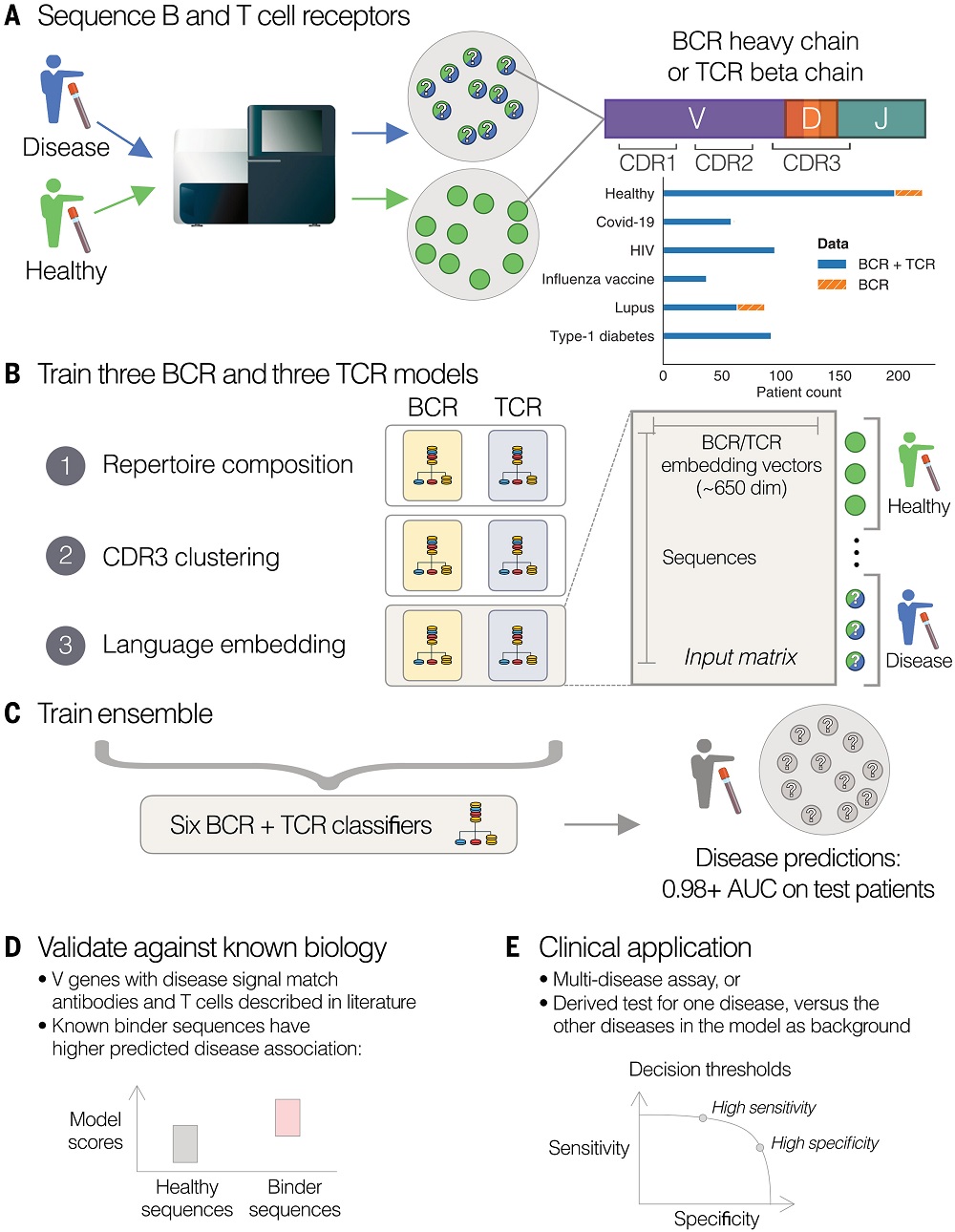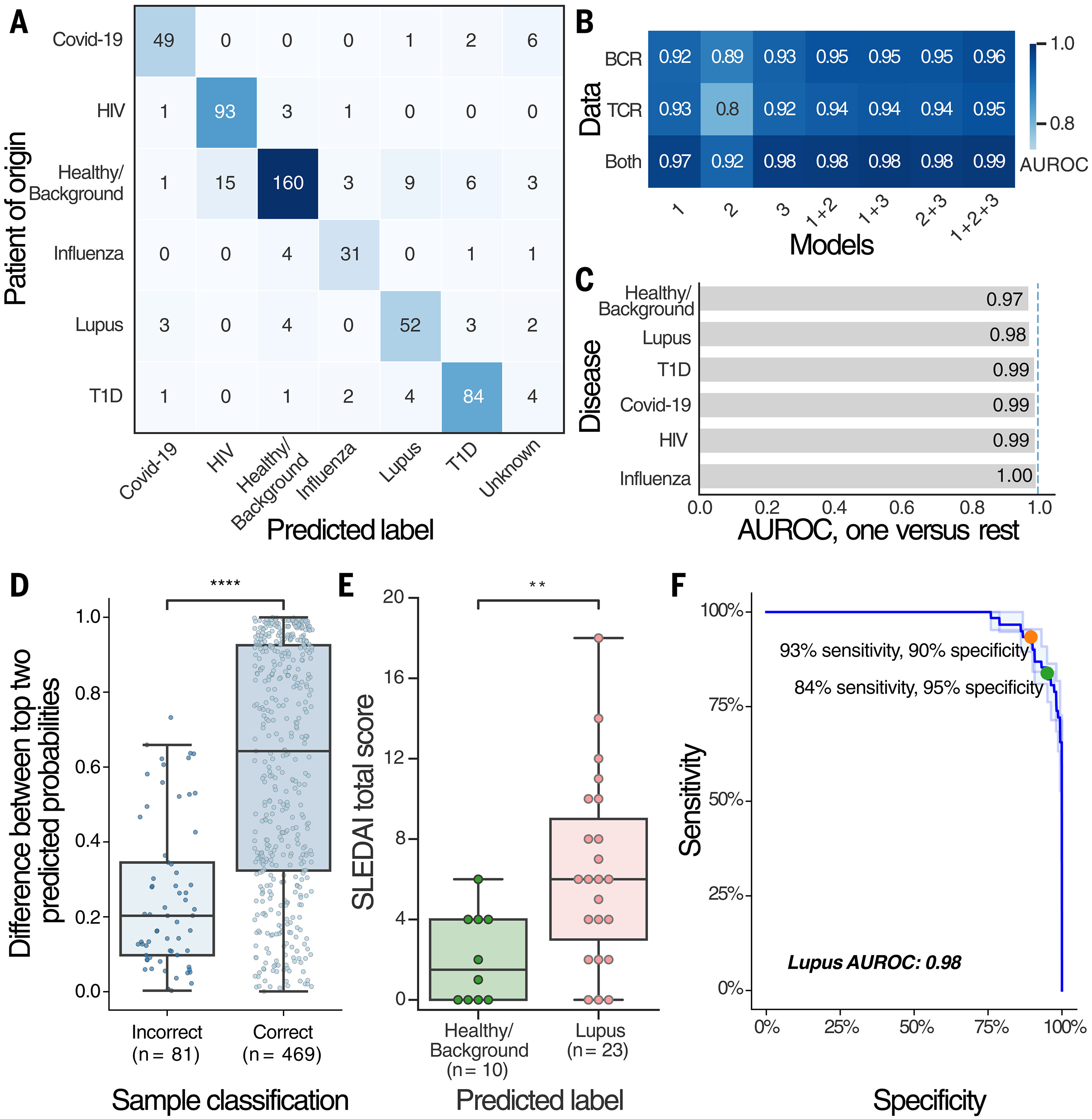Science: Only "one drop of blood" is needed, AI tools can diagnose multiple complex diseases at one time
Traditional clinical diagnosis relies on physical examination, patient history, laboratory testing, and imaging.
In recent years, artificial intelligence (AI) has developed rapidly and has been widely used in general fields, life sciences and medicine. The AI algorithm model trained with large data sets, its huge database and increasingly accurate recognition capabilities make "AI+medical" a reality.
On February 21, 2025, researchers at Stanford University published a paper titled: Disease diagnostics using machine learning of B cell and T cell receptor sequences in Science. The study developed an AI diagnostic tool — Machine Learning for Immunological Diagnosis (Mal-ID). This AI tool can diagnose a series of infections and health conditions at one time by screening immune cell (B cell and T cell) gene sequences in blood samples.
 Fig. 1. Mal-ID framework (Zaslavsky, Maxim E., et al. 2025).
Fig. 1. Mal-ID framework (Zaslavsky, Maxim E., et al. 2025).
When a person has an infection or autoimmune disease, the immune system is activated, the number of B cells and T cells increases, and they begin to produce specific surface receptors. Therefore, by sequencing the genes that encode these receptors, it is possible to unlock this person's unique record of disease and infection.
In this latest study, the research team built a molecular diagnostic tool based on AI (Mal-ID), which trained three models for B cell receptor (BCR) and T cell receptor (TCR) respectively — receptor population analysis model, CDR3 sequence clustering model, protein language model to analyze the gene sequences encoding the key regions of B cell receptor and T cell receptor and select the patterns associated with specific diseases.
The team used Mal-ID to screen 16.2 million B cell receptor sequences and 23.5 million T cell receptor sequences in blood samples from 593 individuals, including patients diagnosed with Covid-19 (n = 63), HIV infection (n = 95), SLE (n = 86), and T1D (n = 92), as well as influenza vaccination recipients (n = 37) and healthy controls (n = 220). In total, 542 individuals had paired B cell and T cell sequence data.
 Fig. 2. Mal-ID classifies disease using BCR heavy chain clones and TCR beta chain clones (Zaslavsky, Maxim E., et al. 2025).
Fig. 2. Mal-ID classifies disease using BCR heavy chain clones and TCR beta chain clones (Zaslavsky, Maxim E., et al. 2025).
After analyzing samples from the 542 participants who had both B cell and T cell data, the AI diagnostic tool scored as high as 0.986 out of 1 in an indicator that measures how well it correctly matches participants to their diseases.
In addition, when comparing the AI tool's ability to distinguish diseases using B cell receptors alone, T cell receptors alone, or both, the team found that combining data from both cell types worked best. For example, type 1 diabetes and systemic lupus erythematosus have clearer markers in T cell receptors, while COVID-19, HIV, and influenza are easier to identify in B cell receptors.
 Fig. 3. From blood to disease classification with immune receptor sequencing (Zaslavsky, Maxim E., et al. 2025).
Fig. 3. From blood to disease classification with immune receptor sequencing (Zaslavsky, Maxim E., et al. 2025).
The research team said that the AI tool's predictions are not completely error-free and are still a long way from clinical application. In fact, from another perspective, as a predictive model based on big data, AI's mispredictions may also stem from subtle differences between populations that are missed by traditional testing methods. Therefore, these AI error cases may help to sort out new subcategories of immune-related diseases and help tailor personalized treatment plans.
Reference
- Zaslavsky, Maxim E., et al. "Disease diagnostics using machine learning of B cell and T cell receptor sequences." Science 387.6736 (2025): eadp2407.

Your email address will not be published. Required fields are marked *